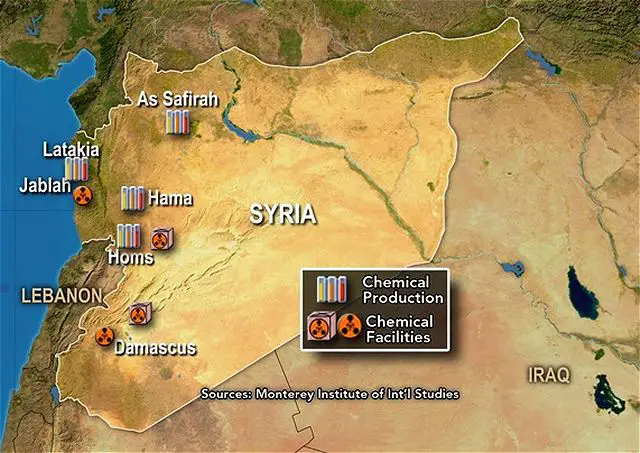| a | |||
Defence News - United States |
|||
| |
|||
| Friday, March 22, 2013, 08:21 AM | |||
| U.S. and NATO countries work on plans for military action in Syria after the use of chemical weapons | |||
After
the use of Chemical weapons in Syria, there is some plans to send troops
on the ground to secure Syria's chemical weapons facilities if they were
in danger of being looted. An actual deployment would likely involve far
fewer ground troops, and from various nations, but it underscores the
scope of the challenge. |
|||
 The opposition Free Syrian Army is creating a special unit of men trained to secure Syria’s chemical weapons sites, a former general in the country’s chemical and biological weapons administration has told the Daily Telegraph. |
|||
| Seven
months ago, President Barack Obama warned the use of chemical weapons
in Syria could bring direct U.S. involvement in that country's raging
civil war. While the administration's interest in U.S. military involvement
in Syria remains low, planners still have been preparing for the possibility
U.S. forces would have to step in and neutralize Syria's military or safeguard
chemical weapons stockpiles. But
such strikes pose a danger of releasing chemical agents into the air around
civilian populations in Syria, the officials said. |
|||
U.S.NATO countries work on plans for military action Syria after use of chemical weapons 2203131
- Posted On














